Fix Error 27300 with Kaspersky Antivirus on Windows
Some Windows users are reporting that they end up encountering the Error 27300 pop-up when attempting to install the Kaspersky application. The text of the error message will be different depending on the underlying cause that is causing the problem. The issue is mostly reported to occur on Windows 7 and Windows 10.
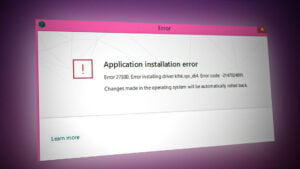
After investigating this particular issue, it turns out that there are several different underlying causes that might be responsible for the apparition of this error code. Here’s a list of verified culprits that might be behind this error code:
- Incompatible application is already installed – One of the most common reasons that will spawn this error code is an incompatible application that is already installed on the system. If this scenario is applicable, you can resolve the issue by getting rid of the incompatible application before retrying the installation of Kaspersky.
- Outdated Windows 10 build – If you’re encountering this issue on Windows 10, it’s possible to encounter this error because your OS is missing a critical infrastructure update that the AV suite requires. In this case, you can fix the issue by installing every pending Windows Update.
- ‘Config’ Registry parameter is incorrectly configured for Windows 7 or Windows 8.1 – If you’re seeing this error on an older Windows version, chances are the installation is failing due to improperly configured network registry keys. If this scenario is applicable, you should be able to fix the issue by making some changes to your Registry.
- Remnants from a previous Kaspersky installation – If you have previously installed a different product from Kaspersky or the installation of Kaspersky Antivirus stopped abruptly, you should be able to resolve the issue by removing any remnants from the old product installation with the Kamvremover tool.
- The Network Setup Service is Disabled – The Network Setup Service is a critical dependency that the installer of Kaspersky Antivirus needs in order to install the security product. If the service is disabled, you should be able to resolve the issue by modifying the startup tab of the Network Setup service.
- WU Dependencies are stuck in a ‘limbo’ state – Under certain circumstances, affected users have reported that this issue occurred in their case due to a WU dependency that was stuck in a limbo state. Most of these users have managed to fix the issue by resetting every relevant WU component.
Now that you are familiar with every potential culprit that might be responsible for this error code, here’s a list of methods that other affected users have successfully used to get to the bottom of this issue:
Method 1: Uninstalling Incompatible applications (if applicable)
The number one cause that will cause Error 27300 to occur when installing Kaspersky Antivirus is an incompatible app that is already installed on the target computer. If this scenario is applicable, you can fix the issue by uninstalling the incompatible application prior to re-trying the installation of Kaspersky Antivirus.
Generally, conflicting applications are limited to other 3rd party competitors AV and firewall products like Avast, AVG, eTrust, McAfee, ZoneAlarm, etc. Here’s a full list of incompatible programs that might cause issues when installing Kaspersky Antivirus.
If you determined that a program that’ incompatible with Kaspersky Antivirus is currently installed on your computer, follow the instructions below to uninstall it from your computer:
- Start by pressing Windows key + R to open up a Run dialog box. Next, type ‘appwiz.cpl’ inside the text box and press Enter to open up the Programs and Features menu.
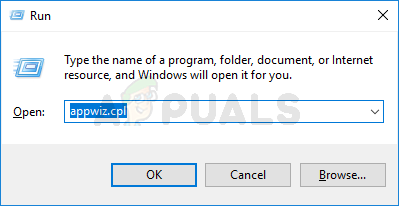
Accessing the Programs and Features menu Note: If you’re prompted by the UAC (User Account Control) prompt, click Yes to grant admin access.
- Once you’re inside the Programs and Features screen, scroll down through the list of installed applications and locate the antivirus suite that you’re planning to uninstall.
- After you locate the program that is incompatible with Kaspersky Antivirus, right-click on it and choose Uninstall from the context menu that just appeared.
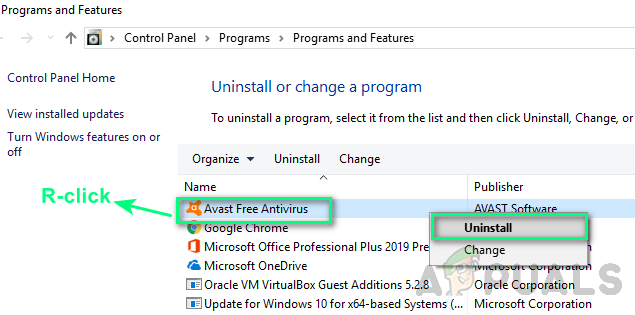
Uninstalling antivirus suite - Inside the uninstallation screen, follow the on-screen prompts to complete the uninstallation, then restart your computer.
- After your computer boots back up, repeat the installation of Kaspersky Antivirus and see if the installation completes successfully.
If this scenario is not applicable, move down to the next potential fix below.
Method 2: Installing every Pending Windows Update (Windows 10 Only)
If you are using Windows 10, it’s important to ensure that you have all the pending updates installed (especially the infrastructure updates that Kaspersky needs in order to be installed correctly).
Several users that were also encountering the Error 27300 when attempting to install Kaspersky Antivirus have reported that the installation was finally successful after they took the time to install every pending Window 10 update from the Windows Update screen.
If you think this scenario looks like it could be applicable, follow the on-screen prompts to install every pending Windows 10 update on your computer:
- Start by pressing Windows key + R to open up a Run dialog box. Next, type ”ms-settings:windowsupdate’ and press Enter to open up the Windows Update tab of the Settings app.
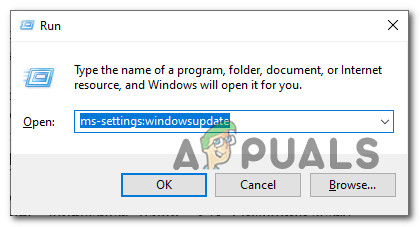
Open the Windows Update Screen - Once you’re inside the Windows update screen, go ahead and click on Check for updates. Next, follow the next instructions to install every Windows update that is currently scheduled to be installed.
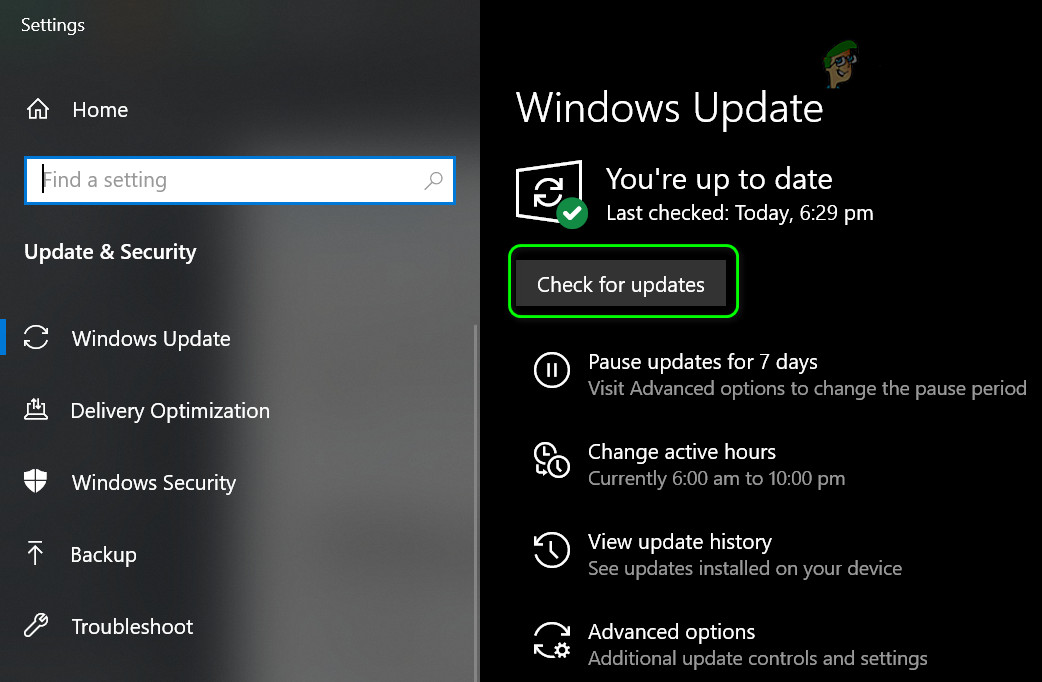
Checking for Windows Updates Note: It’s important to install every type of update including cumulative and security updates, not just the ones labeled as Critical or Important.
- If you have a lot of pending updates, you will be prompted to restart your computer before every update is installed. If this scenario happens in your case, restart as instructed, but make sure to return to this screen at the next startup and finish the installation of the rest of the updates.
- After every pending update, reboot your computer again and trigger the installation of Kasperky once again after your computer boots back up.
In case the installation still bogs down with the same Error 27300, move down to the next potential fix below.
Method 3: Modify the Network ‘Config’ Parameter (Windows 7, Windows 8 Only)
If you’re encountering this issue on Windows 7 or Windows 8.1, the installation most likely fails due to an improperly configured network registry key – If this scenario is applicable, you should be able to resolve the issue by renaming the Network Registry parameter in order to accommodate the code used by the installation of Kaspersky Antivirus.
Several affected users have reported that the issue was fixed and the installation of Kaspersky Antivirus was finally successful.
Follow the instructions below to modify the config parameter in order to resolve the installation glitch of Kaspersky Antivirus on Windows 7 and Windows 8.1:
- Press Windows key + R to open up a Run dialog box. Next, type ‘regedit’ inside the text box, then press Ctrl + Shift + Enter to open up the Registry Editor with elevated access. When you’re prompted by the UAC (User Account Control), click Yes to grant admin access.

Opening the Registry Editor utility with admin access - Once you’re inside the Registry Editor, use the menu on the left to navigate to the following location:
HKEY_LOCAL_MACHINE\SYSTEM\CurrentControlSet\Control\Network
Note: You can either navigate here manually or you can paste the link directly into the navigation bar at the top of the screen and press Enter to get there instantly.
- Once you are inside the correct location, move over to the right-hand pane, right-click on the Config Parameter and rename it to Config2.
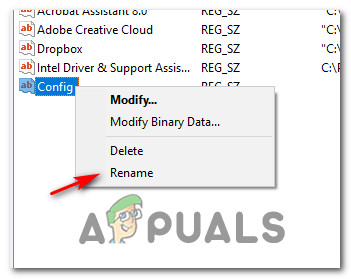
Renaming the Config Parameter - Once the parameter has been renamed correctly, save the changes, close the Registry Editor and restart your computer.
- After your computer boots back up, repeat the installation of Kaspersky Antivirus and see if the issue is now fixed.
In case the same kind of Error 27300 is still occurring, move down to the next potential fix below.
Method 4: Using the Kamvremover tool
As it turns out, this particular issue can also be caused by some type of remnant files from a previous installation of a Kaspersky product that is interfering with the installation of Kaspersky Antivirus.
Several affected users that were also encountering the Error 27300 when installing Kaspersky Antivirus have reported that the issue was finally resolved after they used the kavremover tool to remove any remnants from a previous installation before repeating the installation once again.
Note: Keep in mind that upon running the kavremover the utility will also delete every license information along with every application setting that is currently saved.
If you previously had another Kaspersky product installed on your computer or you previously attempted a botched installation, follow the instructions below to use the kamvremover tool before retrying the installation of Kaspersky Antivirus:
- Download the latest version of the kavremover tool and wait until the download is complete.
- Once the download is complete, double-click on the executable and click Yes at the User Account Control (UAC) prompt.
- At the first End User Licence Agreement prompt, click on Accept.
- Next, use the drop-down menu to select the remnants of the product you wish to remove, then click on Remove and wait for the operation to complete.
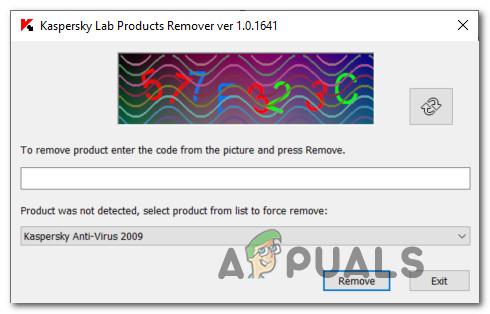
Uninstalling the remnant of a previous Kaspersky product - Once the operation is complete, restart your computer and wait for the next startup to complete.
- Install Kaspersky Antivirus once again conventionally and see if the issue is now fixed.
If you’re still seeing the same Error 27300 when attempting to install Kaspersky Antivirus, move down to the next potential fix below.
Method 5: Modifying the Startup type of the Network Setup Service
According to some affected users, you can also expect to see the Error 27300 popping up due to a service that needs to be enabled (Network Setup Service) in order for the installation of Kaspersky Antivirus to complete.
Several affected users have reported that the issue was resolved and the installation was successful after they used the Services screen to enable the Network Setup Service before retrying the installation of Kaspersky Antivirus.
If you think the Network Setup Service is disabled and it’s causing the installation to fail, follow the instructions below:
- Press Windows key + R to open up a Run dialog box. Next, type ‘services.msc’ inside the text box and press Enter to open up the Services screen.
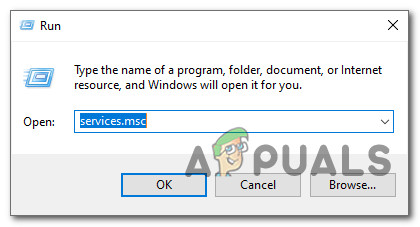
Opening the Services screen Note: If you are prompted by the UAC (User Account Control), click Yes to grant admin access.
- Once you’re inside the Services screen, move over to the right-hand section of the screen and locate the Network Setup Service.
- When you locate the correct service, right-click on the entry associated with Network Setup Service and choose Properties from the context menu.
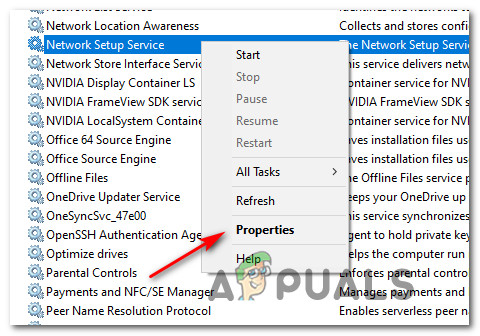
Accessing the Properties screen - Once you’re inside the Properties screen, access the General tab and set the Startup type to Manual using the drop-down menu before clicking on Start below to force-start the service.
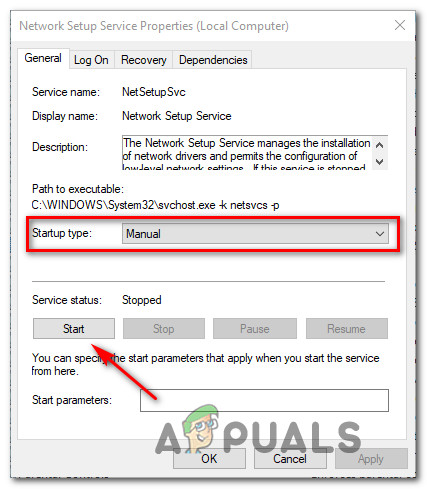
Starting the Network Setup Service forcibly - Click Apply to save the changes, then restart your computer and repeat the installation of the Kaspersky Antivirus app if the same problem is still occurring.
In case you’re still seeing the Error 27300 when attempting to install the 3rd party security app, move down to the final fix below.
Method 6: Resetting the WU Dependencies from Safe Mode
If none of the methods above have proven to be effective in your case, you should check to see if the issue is not related to a WU component that is currently stuck in a limbo state and is preventing the installation of Kaspersky Antivirus.
Several affected users that were dealing with the same kind of issue have reported that they finally managed to bypass the apparition of the Error 27300 after they booted in SafeMode and run a series of commands that have reset the WU Dependencies required by the installation of Kaspersky antivirus.
If you’re looking for specific instructions on how to do this, follow the instructions below:
- First things first, follow the instructions of booting your computer in safe mode.
- Once your computer boots in Safe Mode, press Windows key + R to open up a Run dialog box. Inside the text box, type ‘cmd’ and press Ctrl + Shift + Enter to open up an elevated Command Prompt.
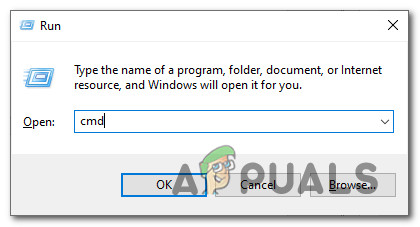
Opening up an elevated CMD prompt with admin access Note: If you are prompted by the UAC (User Account Control), click Yes to grant admin access.
- Inside the elevated Command Prompt, type the following commands In the same order and press Enter after each one to reset every required WU dependency:
net stop cryptsvc ren %systemroot%\system32\catroot2 catroot2_old net start cryptsvc
- Once every command has been run successfully, close the elevated Command prompt and retry the installation of the Kaspersky product that was previously failing.





